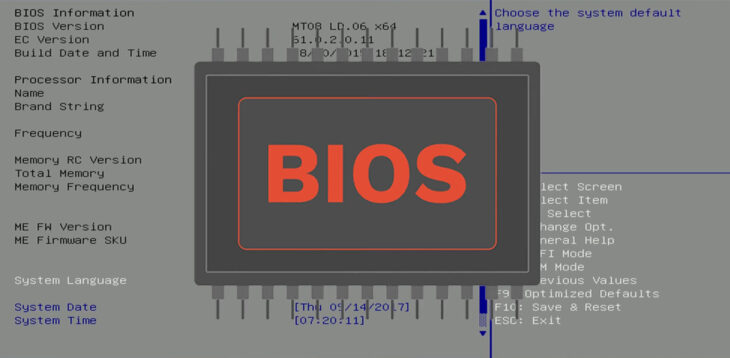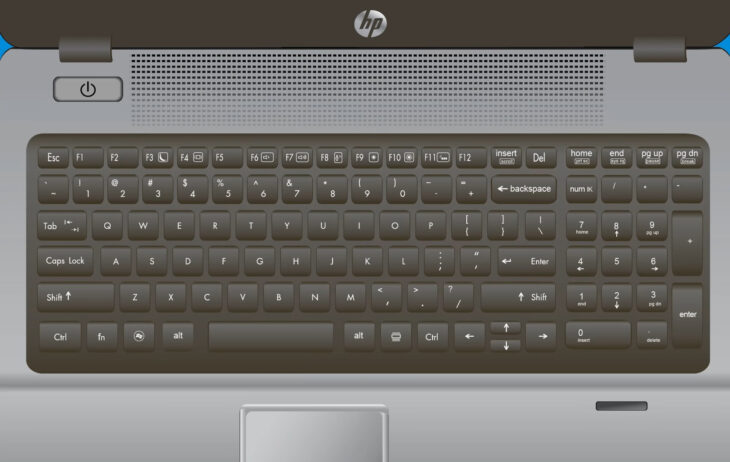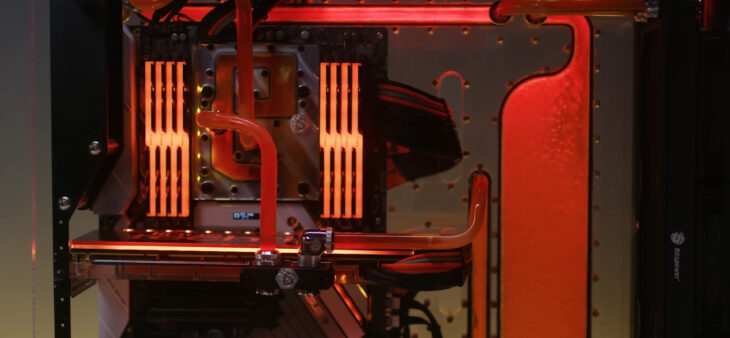Navigating to the BIOS (Basic Input/Output System) of your motherboard can be like entering a maze—overwhelming and confusing if you don’t know your way. That’s why we’ve crafted this guide to help you understand how to easily and successfully get to BIOS on an MSI motherboard.
Whether you’re a seasoned tech expert or a complete newbie, we’ve got you covered!
Table of Contents
ToggleGetting Started: What Is BIOS and Why Should You Care?

BIOS is like the backstage manager of your computer, handling everything from your system’s initialization to its power management. It’s the software that runs before your operating system, ensuring that everything is in perfect order.
Essentially, the BIOS acts as a go-between, facilitating communication between your computer’s operating system and hardware.
Why Is It Important?
Many of us go about our computing lives without ever thinking of the BIOS. However, getting familiar with it is crucial for various reasons:
- Hardware Configuration: Need to change your boot order, adjust system clocks, or enable/disable hardware components? This is your place.
- System Diagnostics: The BIOS environment allows you to run various system checks to identify issues with hardware components.
- Firmware Updates: Occasionally, motherboard manufacturers release updates to improve stability or add features, and BIOS is where you’ll install these.
The MSI Difference
MSI motherboards are a popular choice among gamers and professionals alike. Known for their stability, functionality, and cutting-edge features, they offer some of the most user-friendly BIOS interfaces around. But how do you get into the BIOS on an MSI motherboard? Read on to find out.
Preparation: What You’ll Need Before Jumping In
Check Your System
Before diving into the specifics, make sure your system is fully powered off. It’s also wise to disconnect any non-essential peripherals like USB drives, printers, or external HDDs. This prevents any accidental changes or conflicts during the BIOS navigation.
Read the Manual
Although our guide is comprehensive, it’s always a good idea to skim through your motherboard’s manual. Manufacturers often include specific instructions or keyboard shortcuts that are unique to your motherboard model.
Backup, Backup, Backup
Venturing into the BIOS isn’t without its risks. One wrong setting can lead to boot failures or even hardware damage. Hence, it’s essential to:
- Back up any important data on your system.
- Make a list of your current settings if you’ve made previous adjustments.
Accessing BIOS: Step-by-Step Instructions

The Classic Way: Using the Keyboard
- Power On: Start your computer or restart it if it’s already on.
- The Magic Button: As your system boots, repeatedly press the designated BIOS key. On most MSI motherboards, this is usually the ‘Delete’ or ‘F2’ key.
- Success: If done correctly, this should take you to the MSI BIOS screen.
Modern Twist: Fast Boot & Software Utilities
If you’ve enabled Fast Boot or have a particularly speedy SSD, you might find that you’re unable to access the BIOS using the traditional method. Don’t worry; you’re not out of options:
- MSI Fast Boot Utility: MSI provides a Windows-based utility that allows you to go directly to the BIOS without restarting your computer.
- Windows Advanced Startup: Another approach is to use Windows’ built-in Advanced Startup feature, which includes an option to reboot directly into the UEFI firmware settings (the modern replacement for BIOS).
Troubleshooting Tips
Here are some common issues you might run into:
- Wrong Timing: Timing is key. Start pressing the BIOS key as soon as you power on your system.
- Wrong Key: Double-check the manual to ensure you’re pressing the correct key for your specific MSI motherboard model.
- USB Keyboards: Some older systems may not recognize USB keyboards before the OS boots. In this case, use a PS/2 keyboard.
Common Pitfalls and Their Solutions
Password-Protected BIOS
If you’ve set up a BIOS password and forgotten it, you’ll find yourself locked out. Solutions include:
- CMOS Reset: Most motherboards come with a CMOS jumper that can be used to reset BIOS settings, including the password.
- Contacting Support: In extreme cases, you may need to reach out to MSI customer support for a solution.
Boot Loop After the Changes
If your system is stuck in a boot loop after making changes in the BIOS:
- BIOS Reset: Re-enter the BIOS and use the “Load Optimized Defaults” option to reset settings to factory defaults.
- Manual Troubleshooting: If you know which setting caused the issue, navigate to it and revert the changes manually.
Unresponsive Keyboard or Mouse
Sometimes, input devices may not respond in the BIOS environment:
- Legacy USB Support: Look for an option to enable “Legacy USB Support” within the BIOS.
- Switch Ports: Some users have found success by switching their USB devices to different ports.
Advanced Tips: Going Beyond Basic Access

BIOS Flashing: A Cautionary Tale
BIOS updates can bring new features and stability improvements. However, they also carry risks like bricking your motherboard. Always follow manufacturer guidelines to the letter.
Overclocking: The Need for Speed
The MSI BIOS environment offers robust overclocking options. But remember:
- Ensure you have adequate cooling.
- Incrementally increase clock rates to monitor stability.
Hardware Monitoring: Keep an Eye Out
The BIOS isn’t just for tweaking settings; it also allows you to monitor hardware statistics like temperatures, voltages, and fan speeds. This can be valuable for diagnosing issues or optimizing performance.
Additional Resources: Books, Online Courses, and Forums
Books for the Serious Enthusiast
If you’re looking to dive deeper into the world of BIOS and motherboard architecture, several excellent books provide detailed information:
- “Upgrading and Repairing PCs” by Scott Mueller: A comprehensive guide that covers everything from the basics to advanced troubleshooting.
- “CompTIA A+ Certification All-in-One Exam Guide”: Useful not only for certification but also for its in-depth focus on hardware, including BIOS.
Online Courses: Learn at Your Own Pace
Why stop at articles and books? There are many online courses that offer tutorials on BIOS, system optimization, and even overclocking for the brave:
- Coursera’s Hardware and OS Courses: Ideal for beginners, they provide a general introduction that includes BIOS navigation.
- Udemy’s BIOS & Motherboard Courses: These are more specific and offer a step-by-step guide to every BIOS feature.
Forums and Communities: Share and Learn
One of the best ways to learn is from others. Online forums and communities offer real-world advice and solutions:
- MSI Forums: A must-visit for anyone with an MSI motherboard.
- Reddit’s r/buildapc and r/overclocking: These are excellent communities for discussing issues and sharing tips.
FAQs
Can I Create a BIOS Profile for Different Use-Cases on an MSI Motherboard?
Yes, many MSI motherboards allow you to create and save multiple BIOS profiles. This is particularly useful if you frequently switch between different hardware configurations or overclocking settings. These profiles can be saved to the motherboard itself or onto a USB drive for easy sharing or backup.
Are There Mobile Apps That Can Control MSI BIOS Settings?
Direct BIOS manipulation through mobile apps isn’t commonly supported due to security risks and the low-level nature of the settings. However, MSI and other vendors offer desktop software utilities that offer some level of BIOS control from within the operating system, which you can then access remotely via certain remote desktop solutions.
Can I Access the BIOS if My Display Is Not Working?
Accessing it without a display is quite challenging since you won’t be able to see what you’re selecting. However, if you suspect that the issue is a wrong display setting in the BIOS, you could try blind navigation if you’re familiar with the layout.
Another option is to reset the CMOS to default settings, but this should be a last resort as it resets all the settings.
Does BIOS Access Speed Depend on My Processor or RAM?
Generally, the speed of entering or navigating through the BIOS is not dependent on your processor or RAM speed. The BIOS is a low-level software interface that has its own set of requirements separate from your system’s primary hardware.
However, if you’re experiencing extremely slow menus, it could be indicative of a deeper hardware issue.
Is Virtualization Enabled by Default in MSI BIOS?
In many MSI motherboards, virtualization is not enabled by default. You would typically need to go into the BIOS settings to enable this feature manually, which is usually found under the CPU Configuration or Advanced Features menu.
What Is the Secure Erase Feature I See in the MSI BIOS?
The Secure Erase feature is used to wipe all data from an SSD or HDD securely. It restores the drive to its factory settings and performance levels. Use this feature cautiously, as it will permanently delete all data on the drive, making it unrecoverable. This option is generally found in the “Storage” or “Advanced” tab in MSI BIOS.
Final Words
Mastering the BIOS might seem like a daunting task, but as you can see, it’s more about understanding what’s under the hood than wrestling with technological chaos. Take the time to familiarize yourself with your MSI motherboard’s BIOS, and you’ll find a wealth of customization and optimization options at your fingertips.



